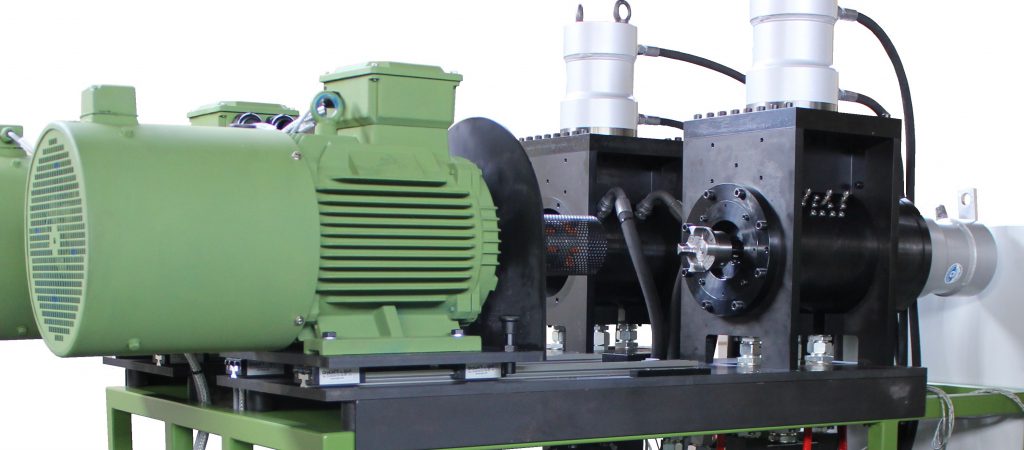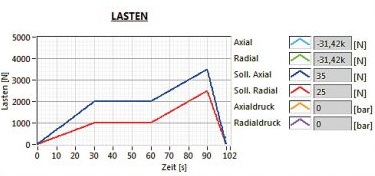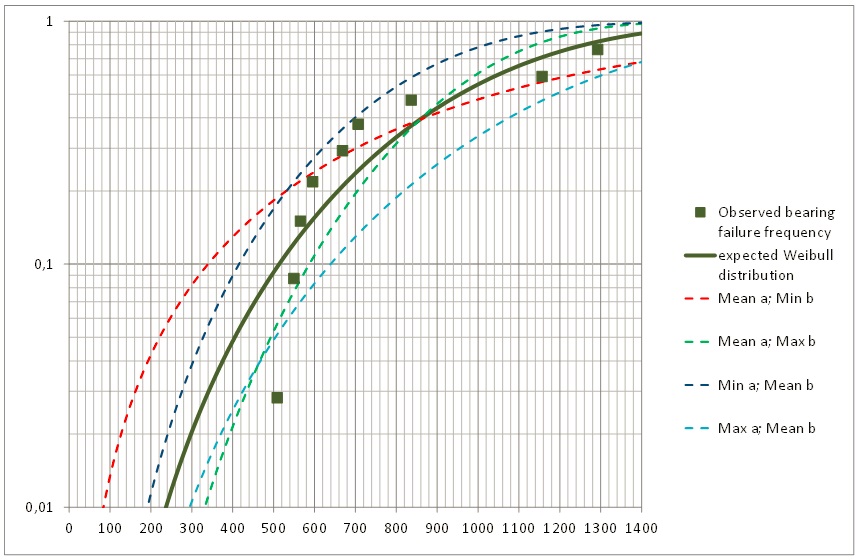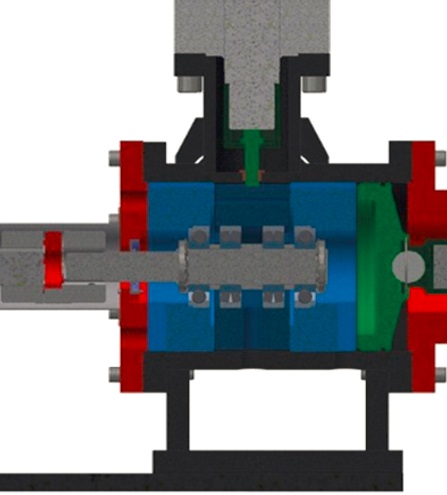
Our test rigs are available to test all types of rolling element bearings up to an outer diameter of 320mm. Aside from the axial and radial loads, test conditions include the rotational speed and lubrication conditions, i.e. the lubricant, temperature, and oil quantity (if applicable).

All of our test rigs offer the possibility of varying these parameters in time, allowing for load steps, ramps, or cycles to be performed automatically. The temperature, vibrations and (optionally) the frictional torque are all measured. We routinely perform endurance testing as well as testing to determine frictional losses, which is important for the efficiency of transmissions.
When performing endurance testing, three situations arise: supplier comparison, technical validation of a particular product, and routine quality assurance.

When comparing suppliers, one series per supplier must be run until failure. Due to the natural variation in results, we recommend at least five samples per group to ensure a statistically significant conclusion. The test conditions should correspond to the intended application but can be altered within a certain range to reduce run time. In this context, it frequently makes sense to define load steps or large ramps to ensure that even in very high-quality bearings the samples fail within a reasonable time. We are happy to offer our expertise in determining appropriate test conditions.
For a particular combination of bearing, lubricant, and (optionally) misalignment the expected lifetime relies on calculations run according to a relevant standard such as DIN ISO 281. To confirm that the lifetime can be safely reached it is not strictly necessary to produce failures. Instead, it is sufficient to drive a certain number of samples to a multiple of their theoretical lifetimes.
Depending on the setup, two or four samples can be tested simultaneously. A sensible determination can be reached if e.g. eight samples in two test runs each reach triple their theoretical lifetimes without damages.

For routine quality assurance, a number of samples should be taken at random and inspected. One particularly efficient method is to test four samples and run them until twice their theoretical lifetime under harsh conditions. If this is reached without damages, then it can be said with high probability that the lot is mistake-free.
When doing this, one must remember that the product and/or producer has already been validated and approved. The point is therefore not to fundamentally determine the suitability of the bearings, but to have a better chance of catching mistakes, which can happen at any company. Since mistakes in otherwise high-quality products drastically reduce their lifetime, such test runs can replace all other forms of incoming control and are, for small bearings, typically associated with low costs.